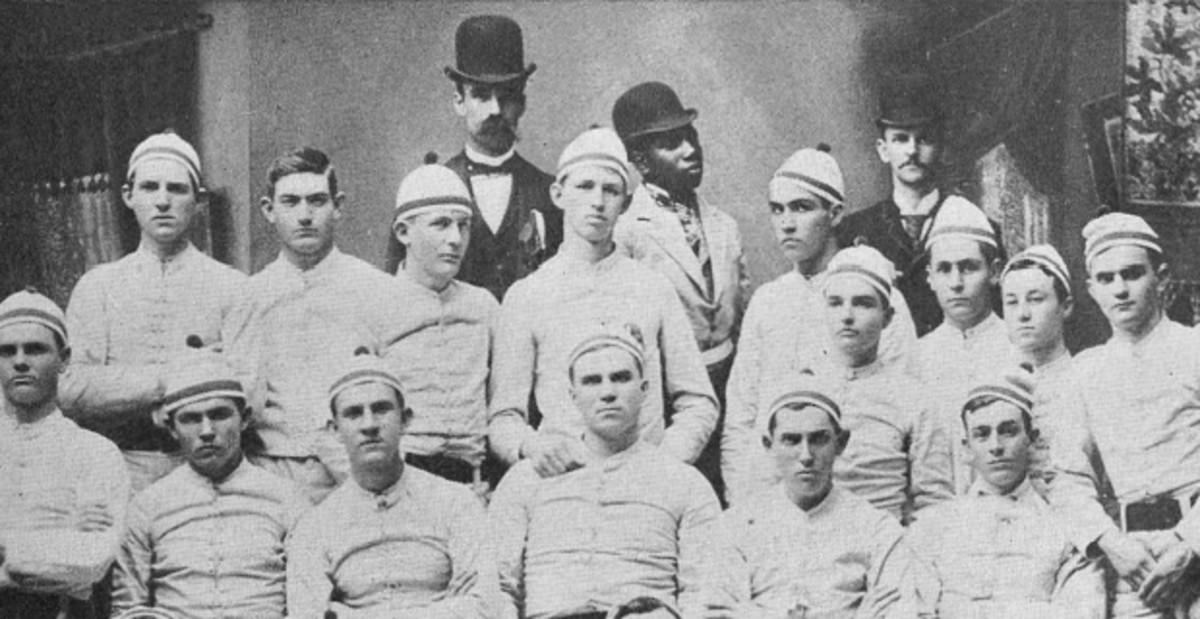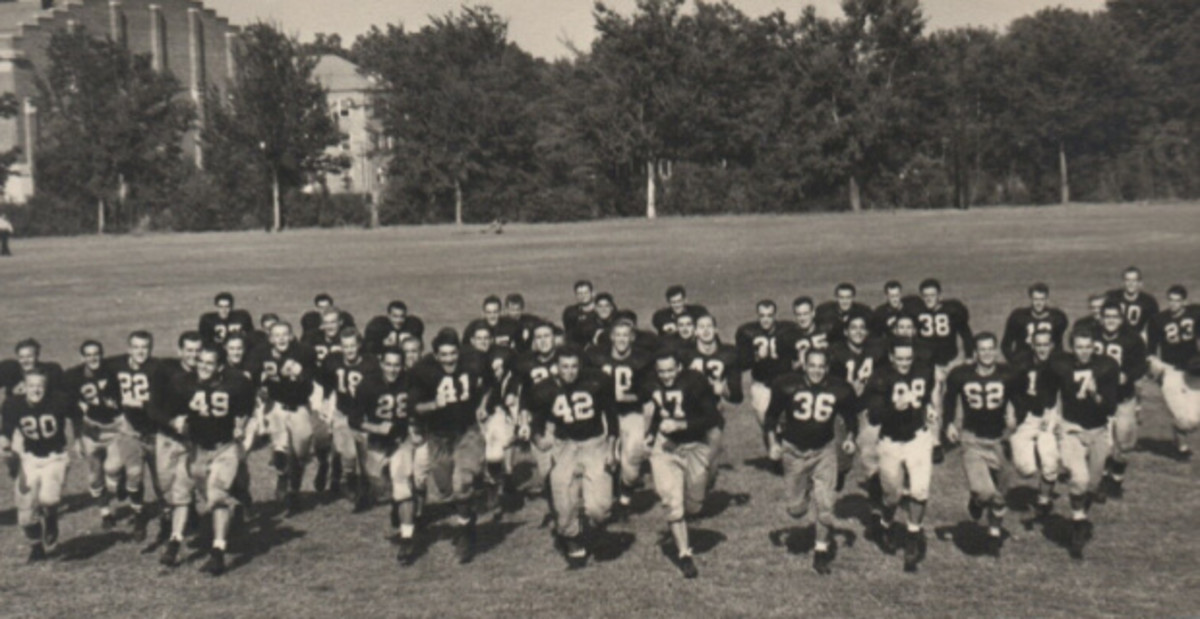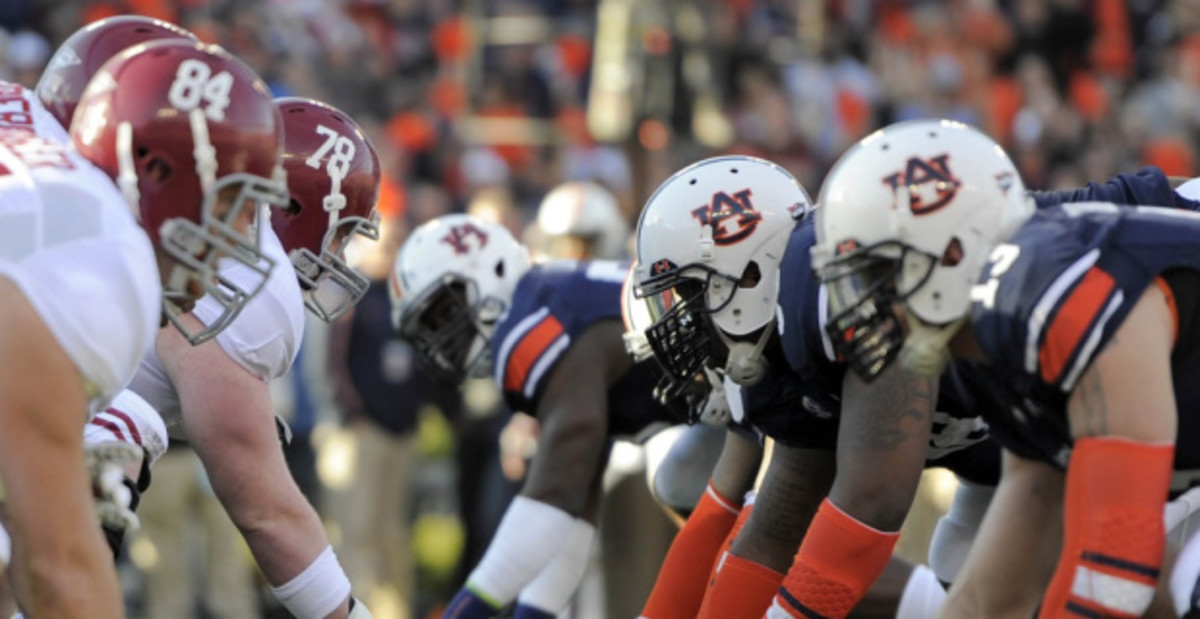Alabama vs. Auburn: Iron Bowl history, scores, notable games

In a sport filled with tradition, pageantry, loyalty, and intense rivalries, perhaps no other series embodies all of those qualities better than Alabama vs. Auburn: the Iron Bowl Game.
In the state of Alabama, you’re either “Roll Tide” or “War Eagle.” If you’re one, you’re not the other, and there’s no room in the middle for compromise when it’s time to play the Iron Bowl. Or any other time, for that matter.
Let's look at the history of the Iron Bowl, from past to present.
Alabama vs. Auburn history
Little did they know on that cold February day in 1893, but those 5,000 people at Lakeview Park in Birmingham, Alabama, saw the first ever meeting in one of the great rivalries in world sports.
Auburn went away with it, beating the Crimson Tide, 32-22, in what it said was the first game of the 1893 season. Alabama disagreed, calling it the season finale for 1892. From the start, there was an argument.
1907 — The Year of Animosity

During a state legislature session that year, lawmakers started a debate to move the state's land grant college from Auburn to Birmingham. The motion failed, but that same year, the football rivalry took it up a notch, too.
So much so that it ended completely and didn't return for more than 40 years. For two generations, the schools glared at each other from opposite sides of the state.
There are a few theories as to why. One is that there was too much violence at the 1907 game — both on and off the field — and that the series was called off simply to preserve the peace.
Another is that Auburn coach Mike Donahue wanted to cancel the rivalry in protest over Alabama's offensive strategy in the 1906 and 1907 games.
Tide coach Doc Pollard employed what he called "military shifts" against Auburn in the '06 matchup — pre-snap movements in which every player except the center moved to create an unbalanced line.
The next year, Pollard installed the "Varsity Two Step", a similar formation that enraged Donahue so much that he demanded a referee from outside the South officiate the game. Alabama refused.
But the real reason for the 41-year pause was probably money. Thirty-four whole dollars.
The $34 dispute

For the 1907 game, the hotel allowance for each player — 17 players per team — amounted to $2 per man, per day, including the hotel and meals.
Then in 1908, Auburn team manager Thomas Bragg sent Alabama coach Doc Pollard a proposed contract that asked for $3.50 per man, per day, for 22 players over two nights.
Bama's counter-offer was $3 per man for 20 players. Auburn said no, and months of back and forth ensued, an argument that lasted so long that by the time any kind of settlement could be reached, it was already time to set the 1908 football schedule.
That year, both sides attempted to reinstate the series — all they had to do was come up with a date. But even then, Alabama and Auburn couldn't quite see things the same way.
That September, Auburn agreed to a compromise to the contract that Alabama suggested, and Alabama in turn agreed to meet most of Auburn's demands on the payment for players' lodging and meals.
Okay — all good then, right? Well, no. Auburn proposed four dates to choose from for the game. But two of those dates passed before Alabama even replied, leaving two — one of which the Tide had already set to play Haskell Institute; the other coming the Saturday after Thanksgiving.
But the Tide wouldn't move the Haskell game, and Auburn decided it didn't want to play football after Thanksgiving. That was that — the Iron Bowl was finished, for good. Or so they thought.
The waiting game
In the intervening years, Alabama evolved into a national football power. Wallace Wade led the Crimson Tide to three championships, in 1925, 1926, and 1930. Frank Thomas won two more in 1934 and 1941, and Bama enjoyed 14 straight winning seasons.
Auburn enjoyed moderate success in the 1910s, placing first in the SIAA in 1913, 1914, and 1919 under Donahue. It went 8-0 in the 1913 season, beating teams by a combined 210 points. Auburn didn't allow a point in 1914, going 8-0-1, with a scoreless tie against rival Georgia.
Donahue finished with a 99-35-5 record at Auburn, leaving the school after the 1922 season. During that same time frame, Alabama went 82-34-10.
1948 — Rivalry Resurrected

Auburn shot down a chance at re-starting the rivalry in 1923, and Alabama did likewise in 1944.
After 1944, the Alabama state legislature passed a series of resolutions that the schools should meet again in football, but neither Auburn or Alabama paid any attention to them.
Legend has it that Alabama was afraid the state had plans to withhold public funding from the school if it didn't play Auburn. That pressure may have finally led to a conversation between presidents — Alabama's John M. Gallalee and Auburn's Ralph B. Draughton — and the resumption of the Iron Bowl.
Both sides decided it would be best to play it at a neutral site, choosing Legion Field in Birmingham. The schools would play on that site every year until 1989, when it moved to Auburn for the first time. (Tuscaloosa hosted the game in 1901, but not again until 2000, a 9-0 Auburn win.)
The Game
The 1948 game was a raucous, jubilant release valve for generations of frustration from fans and alumni from both schools and hearkened a new era of football intensity that runs to the present day.
Gates were opened hours before the game, allowing fans from both teams to fill the stadium early and engage in shouting matches of "Roll Tide" and "War Eagle" at each other.
Alabama's marching band formed a UA and played its fight song. Auburn followed with an AU formation. Both bands then played the national anthem together.
Then — finally, after 41 years, Alabama and Auburn played a game of football. Alabama won, 55-0 — to this day, the largest margin of victory in the series.
Bama opened a 21-0 first half lead with two second quarter touchdowns. Ed Salem connected with Clem Welsh on a 20-yard score and then again a 6-yard reverse. Salem opened the second half running for a 17-yard TD and passed a 53-yarder to Rebel Steiner.
Salem found Howard Pierson from 20 yards and Bama blocked a punt for a score before Don Spurrell returned an interception from 20 yards. In all, the Tide scored six times after the break.
Arguably the meanest, nastiest, most passionate, most fun rivalry in college football was here to stay.
Alabama vs. Auburn: The series

1890s
Feb. 22, 1893: Auburn, 32-22
Nov. 29, 1893: Auburn, 40-16
Nov. 29, 1894: Alabama, 18-0
Nov. 23, 1895: Auburn, 48-0
1900s
Nov. 17, 1900: Auburn, 53-5
Nov. 15, 1901: Auburn, 17-0
Oct. 18, 1902: Auburn, 23-0
Oct. 23, 1903: Alabama, 18-6
Nov. 12, 1904: Auburn, 29-5
Nov. 18, 1905: Alabama, 30-0
Nov. 17, 1906: Alabama, 10-0
Nov. 16, 1907: Tie, 6-6
1940s
Dec. 4, 1948: Alabama, 55-0
Dec. 3, 1949: Auburn, 14-13
1950s
Dec. 2, 1950: Alabama, 34-0
Dec. 2, 1951: Alabama, 25-7
Nov. 29, 1952: Alabama, 21-0
Nov. 28, 1953: Alabama, 10-7
Nov. 27, 1954: Auburn, 28-0
Nov. 26, 1955: Auburn, 26-0
Dec. 1, 1956: Auburn, 34-7
Nov. 30, 1957: Auburn, 40-0
Nov. 29, 1958: Auburn, 14-8
Nov. 28, 1959: Alabama, 10-0
1960s
Nov. 26, 1960: Alabama, 3-0
Dec. 2, 1961: Alabama, 34-0
Dec. 1, 1962: Alabama, 38-0
Nov. 30, 1963: Auburn, 10-8
Nov. 26, 1964: Alabama, 21-14
Nov. 27, 1965: Alabama, 30-3
Dec. 3, 1966: Alabama, 31-0
Dec. 2, 1967: Alabama, 7-3
Nov. 30, 1968: Alabama, 24-16
Nov. 29, 1969: Auburn, 49-26
1970s
Nov. 28, 1970: Auburn, 33-28
Nov. 27, 1971: Alabama, 31-7
Dec. 2, 1972: Auburn, 17-16
Dec. 1, 1973: Alabama, 35-0
Nov. 29, 1974: Alabama, 17-13
Nov. 29, 1975: Alabama, 28-0
Nov. 27, 1976: Alabama, 38-7
Nov. 26, 1977: Alabama, 48-21
Dec. 2, 1978: Alabama, 34-16
Dec. 1, 1979: Alabama, 25-18
1980s
Nov. 29, 1980: Alabama, 34-18
Nov. 28, 1981: Alabama, 28-17
Nov. 27, 1982: Auburn, 23-22
Dec. 3, 1983: Auburn, 23-20
Dec. 1, 1984: Alabama, 17-15
Nov. 30, 1985: Alabama, 25-23
Nov. 29, 1986: Auburn, 21-17
Nov. 27, 1987: Auburn, 10-0
Nov. 25, 1988: Auburn, 15-10
Dec. 2, 1989: Auburn, 30-20
1990s
Dec. 1, 1990: Alabama, 16-7
Nov. 30, 1991: Alabama, 13-6
Nov. 26, 1992: Alabama, 17-0
Nov. 20, 1993: Auburn, 22-14
Nov. 19, 1994: Alabama, 21-14
Nov. 18, 1995: Auburn, 31-27
Nov. 23, 1996: Alabama, 24-23
Nov. 22, 1997: Auburn, 18-17
Nov. 21, 1998: Alabama, 31-17
Nov. 20, 1999: Alabama, 28-17
2000s
Nov. 18, 2000: Auburn, 9-0
Nov. 17, 2001: Alabama, 31-7
Nov. 23, 2002: Auburn, 17-7
Nov. 22, 2003: Auburn, 28-23
Nov. 20, 2004: Auburn, 21-13
Nov. 19, 2005: Auburn, 28-18
Nov. 18, 2006: Auburn, 22-15
Nov. 24, 2007: Auburn, 17-10
Nov. 29, 2008: Alabama, 36-0
Nov. 27, 2009: Alabama, 26-21
2010s
Nov. 26, 2010: Auburn, 28-27
Nov. 26, 2011: Auburn, 42-14
Nov. 24, 2012: Alabama, 49-0
Nov. 30, 2013: Auburn, 34-28
Nov. 29, 2014: Auburn, 55-44
Nov. 28, 2015: Alabama, 29-13
Nov. 26, 2016: Alabama, 30-12
Nov. 25, 2017: Auburn, 26-14
Nov. 24, 2018: Alabama, 52-21
Nov. 30, 2019: Auburn, 48-45
2020s
Nov. 28, 2020: Alabama, 42-13
Nov. 27, 2021: Alabama, 24-22 (4 OT)
Nov. 26, 2022: Alabama, 49-27
Nov. 25, 2023: Alabama, 27-24
More college football from SI: Top 25 Rankings | Schedule | Teams
Follow College Football HQ: Bookmark | Rankings | Picks
